-
 Bitcoin
Bitcoin $119100
-2.16% -
 Ethereum
Ethereum $4300
-0.31% -
 XRP
XRP $3.171
-2.99% -
 Tether USDt
Tether USDt $1.000
-0.01% -
 BNB
BNB $814.1
-1.33% -
 Solana
Solana $176.5
-4.67% -
 USDC
USDC $0.0000
0.00% -
 Dogecoin
Dogecoin $0.2267
-5.83% -
 TRON
TRON $0.3465
2.15% -
 Cardano
Cardano $0.7870
-4.98% -
 Chainlink
Chainlink $21.66
-2.27% -
 Hyperliquid
Hyperliquid $43.89
-4.62% -
 Stellar
Stellar $0.4414
-3.35% -
 Sui
Sui $3.707
-6.73% -
 Bitcoin Cash
Bitcoin Cash $599.1
3.73% -
 Hedera
Hedera $0.2504
-6.96% -
 Ethena USDe
Ethena USDe $1.001
-0.01% -
 Avalanche
Avalanche $23.21
-4.99% -
 Litecoin
Litecoin $121.1
-3.55% -
 Toncoin
Toncoin $3.415
0.45% -
 UNUS SED LEO
UNUS SED LEO $9.002
-1.24% -
 Shiba Inu
Shiba Inu $0.00001314
-5.43% -
 Uniswap
Uniswap $11.45
1.63% -
 Polkadot
Polkadot $3.926
-5.37% -
 Cronos
Cronos $0.1694
1.63% -
 Ethena
Ethena $0.8117
-2.35% -
 Dai
Dai $1.000
0.00% -
 Bitget Token
Bitget Token $4.422
-1.43% -
 Monero
Monero $264.2
-0.83% -
 Pepe
Pepe $0.00001137
-8.29%
What is PoS (Proof of Stake)?
Proof-of-Stake (PoS) is an energy-efficient blockchain consensus mechanism where validators, chosen based on staked cryptocurrency, verify transactions, earning rewards. Unlike PoW, it reduces energy consumption and offers faster transaction speeds, but carries risks like centralization and the "nothing-at-stake" problem.
Mar 12, 2025 at 04:05 pm
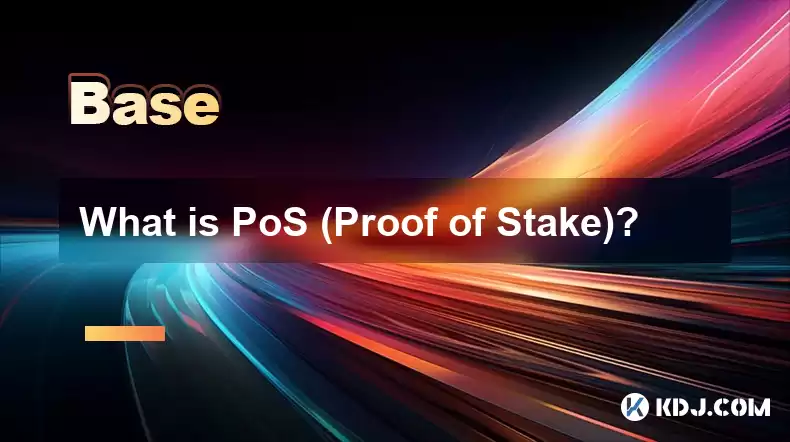
Key Points:
- Proof-of-Stake (PoS) is a consensus mechanism used in blockchain networks to validate transactions and create new blocks.
- Unlike Proof-of-Work (PoW), PoS does not rely on energy-intensive mining. Instead, validators are chosen based on the amount of cryptocurrency they stake.
- Staking involves locking up a certain amount of cryptocurrency to participate in the validation process. Validators earn rewards for their participation.
- PoS is considered more energy-efficient and environmentally friendly than PoW.
- Several variations of PoS exist, each with its own strengths and weaknesses.
What is Proof of Stake (PoS)?
Proof-of-Stake (PoS) is a consensus mechanism used in blockchain technology to validate transactions and add new blocks to the blockchain. It's an alternative to the more energy-intensive Proof-of-Work (PoW) mechanism used by Bitcoin. Instead of miners competing to solve complex mathematical problems, PoS selects validators based on the amount of cryptocurrency they hold and stake. The more cryptocurrency a validator stakes, the higher their chance of being selected to validate transactions.
How does PoS work?
In a PoS system, users "stake" their cryptocurrency, essentially locking it up in a smart contract. This staked cryptocurrency acts as collateral. The blockchain then randomly selects validators from the pool of staked coins. The selection process is designed to be fair and prevent manipulation. The selected validator is responsible for creating and verifying the next block of transactions. This process requires less computational power compared to PoW, leading to significantly lower energy consumption.
What are the advantages of PoS?
One of the primary advantages of PoS is its energy efficiency. PoW systems require vast amounts of electricity to power mining operations, resulting in a substantial carbon footprint. PoS significantly reduces this environmental impact. Furthermore, PoS often leads to higher transaction speeds and lower transaction fees. The reduced computational requirements mean transactions can be processed faster and more efficiently.
What are the disadvantages of PoS?
While PoS offers many benefits, it also has potential drawbacks. One concern is the "nothing-at-stake" problem, where validators might have little incentive to act honestly because the penalty for misbehavior might be less than the potential rewards. Another potential issue is the centralization risk. If a few large holders control a significant portion of the staked cryptocurrency, they could potentially exert undue influence on the network.
Different types of PoS:
There are various implementations of PoS, each with its own characteristics. Some notable variations include:
- Delegated Proof-of-Stake (DPoS): In DPoS, token holders vote for delegates who then validate transactions. This system aims to improve efficiency and scalability.
- Pure Proof-of-Stake: This is a more straightforward implementation where validators are chosen based solely on the amount of staked cryptocurrency.
- Leased Proof-of-Stake (LPoS): In LPoS, users can lease their coins to validators, allowing them to participate in staking without needing to actively run a node.
- Proof-of-Stake with Slashing: This variation includes penalties for malicious or negligent validators, deterring dishonest behavior. These penalties, known as "slashing," typically involve a reduction in the validator's staked coins.
Staking and Rewards:
Staking involves locking up a specific amount of cryptocurrency for a defined period. In return for participating in the validation process, stakers receive rewards in the form of newly minted cryptocurrency or transaction fees. The rewards vary depending on the specific blockchain and the amount staked. The process of staking can be done through various methods, including running a full node, using a staking pool, or utilizing exchange-based staking services.
Security Considerations in PoS:
While PoS is generally considered secure, potential vulnerabilities exist. The security of a PoS blockchain depends on the robustness of its consensus mechanism, the strength of its cryptographic algorithms, and the integrity of its validators. Attacks such as double-spending or 51% attacks remain possible, though typically more difficult to execute compared to PoW systems.
Common Questions and Answers:
Q: Is PoS better than PoW?
A: PoS and PoW are different consensus mechanisms with their own strengths and weaknesses. PoS is generally considered more energy-efficient and potentially faster, while PoW offers a higher level of decentralization. The "better" option depends on the specific priorities of the blockchain network.
Q: How much cryptocurrency do I need to stake?
A: The minimum amount of cryptocurrency required for staking varies depending on the specific blockchain. Some blockchains have very low minimums, while others require significant amounts. Always check the specific requirements of the blockchain you wish to stake on.
Q: What are the risks of staking?
A: Risks associated with staking include the possibility of losing staked coins due to validator errors, network attacks, or smart contract vulnerabilities. Additionally, the value of the staked cryptocurrency can fluctuate, impacting the overall return on investment.
Q: Is staking passive income?
A: Staking can generate passive income, but it's not guaranteed. The rewards are dependent on various factors, including the amount staked, the network's activity, and the overall value of the cryptocurrency. It's not a get-rich-quick scheme and requires careful consideration of the risks involved.
Q: How do I choose a PoS cryptocurrency to stake?
A: When choosing a PoS cryptocurrency to stake, consider factors like the network's security, the projected returns, the minimum staking requirements, and the overall project's reputation and development team. Always conduct thorough research before investing.
Disclaimer:info@kdj.com
The information provided is not trading advice. kdj.com does not assume any responsibility for any investments made based on the information provided in this article. Cryptocurrencies are highly volatile and it is highly recommended that you invest with caution after thorough research!
If you believe that the content used on this website infringes your copyright, please contact us immediately (info@kdj.com) and we will delete it promptly.
- Dogecoin, Presale, Surge: Riding the Meme Coin Wave
- 2025-08-12 11:10:12
- Dogecoin, Tron, and the ROI Reality Check: What's a Crypto Investor to Do?
- 2025-08-12 11:15:12
- Ethereum Layer-2 Scaling Competition Heats Up as ETH Breaks $4K
- 2025-08-12 10:30:12
- China Regulation, Stablecoins, and BNB Presale: Navigating the Crypto Landscape
- 2025-08-12 11:30:12
- Meme Coins, Investment, and Token Burns: What's Hot in 2025?
- 2025-08-12 10:30:12
- BlockDAG, Chainlink, Hedera: The Cryptos Enterprises are Eyeing
- 2025-08-12 09:30:12
Related knowledge
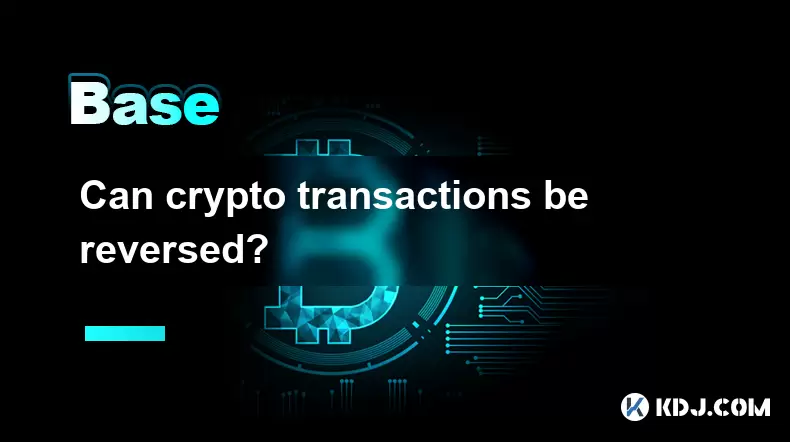
Can crypto transactions be reversed?
Aug 10,2025 at 01:35am
Understanding the Immutability of Blockchain TransactionsCryptocurrency transactions are built on blockchain technology, which is designed to be immut...

What happens if I forget my crypto wallet password?
Aug 09,2025 at 08:50am
Understanding the Role of a Crypto Wallet PasswordA crypto wallet password serves as a critical security layer that protects access to your digital as...
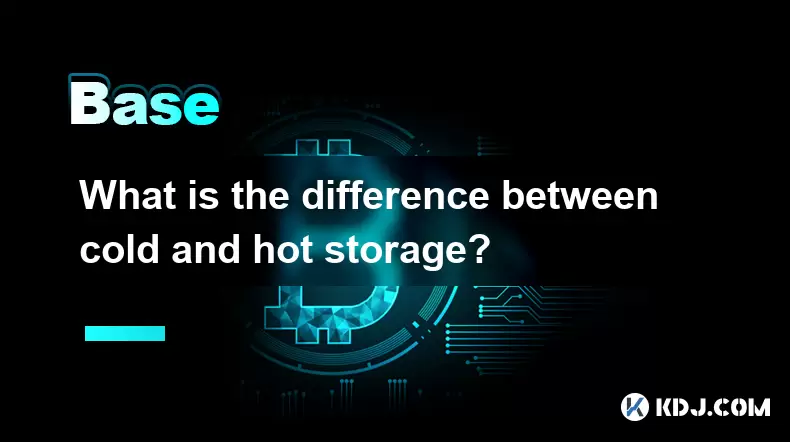
What is the difference between cold and hot storage?
Aug 12,2025 at 01:01am
Understanding Cold Storage in CryptocurrencyCold storage refers to offline methods of storing cryptocurrency private keys, ensuring they are not expos...
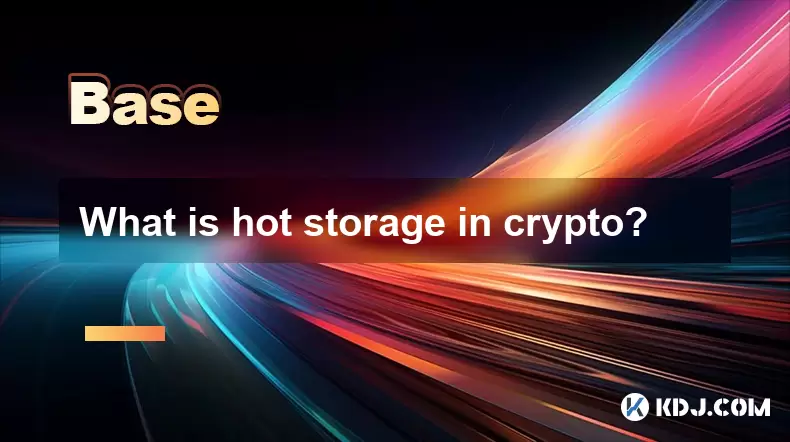
What is hot storage in crypto?
Aug 11,2025 at 07:08am
Understanding Hot Storage in CryptocurrencyHot storage refers to cryptocurrency wallets that are connected to the internet. Unlike cold storage soluti...
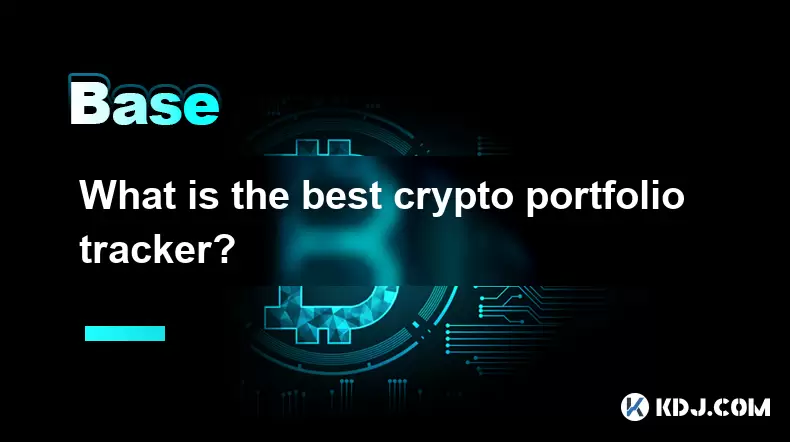
What is the best crypto portfolio tracker?
Aug 10,2025 at 05:08am
Understanding the Role of a Crypto Portfolio TrackerA crypto portfolio tracker is a digital tool designed to help investors monitor the performance of...
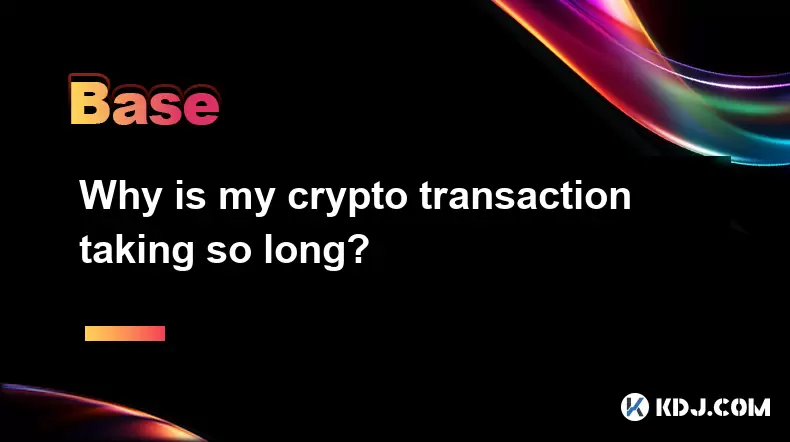
Why is my crypto transaction taking so long?
Aug 11,2025 at 11:35am
Understanding Blockchain Network CongestionWhen a crypto transaction is delayed, one of the most common causes is network congestion on the blockchain...

Can crypto transactions be reversed?
Aug 10,2025 at 01:35am
Understanding the Immutability of Blockchain TransactionsCryptocurrency transactions are built on blockchain technology, which is designed to be immut...

What happens if I forget my crypto wallet password?
Aug 09,2025 at 08:50am
Understanding the Role of a Crypto Wallet PasswordA crypto wallet password serves as a critical security layer that protects access to your digital as...

What is the difference between cold and hot storage?
Aug 12,2025 at 01:01am
Understanding Cold Storage in CryptocurrencyCold storage refers to offline methods of storing cryptocurrency private keys, ensuring they are not expos...

What is hot storage in crypto?
Aug 11,2025 at 07:08am
Understanding Hot Storage in CryptocurrencyHot storage refers to cryptocurrency wallets that are connected to the internet. Unlike cold storage soluti...

What is the best crypto portfolio tracker?
Aug 10,2025 at 05:08am
Understanding the Role of a Crypto Portfolio TrackerA crypto portfolio tracker is a digital tool designed to help investors monitor the performance of...

Why is my crypto transaction taking so long?
Aug 11,2025 at 11:35am
Understanding Blockchain Network CongestionWhen a crypto transaction is delayed, one of the most common causes is network congestion on the blockchain...
See all articles

























































































